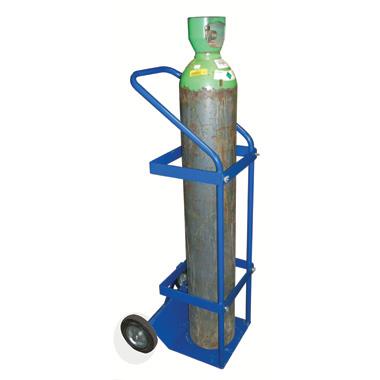
Before buying cylinder handling and storage equipment it is important to understand and assess how different types of cylinders need to be handled and also to establish the actual requirements of individual gases by identifying them in the first place.
All gas cylinders contain gases under pressure and may present a risk of explosion if not safely handled and stored. UK legislation requires that a site specific risk assessment is required for each gas cylinder store, refer to The Management of Health and Safety at Work Regulations (6) and The Dangerous Substances and Explosive Atmospheres Regulations (DSEAR) (9). The HSE provide a wide range of guidance on carrying out such a risk assessments on their website.
So the first thing is to establish exactly what gas is contained within the cylinder and what classification that gas has. The British Compressed Gases Association (BCGA) is a good source of information to help you with this and their guidance notes have a useful table on page 6 of their PDF detailing the categories.

The gas in a cylinder can be identified by referring to the cylinder label or 'collar'. This label also provides vital safety information. The British Oxygen Company (BOC) uses the diagram below that explains the different elements of a typical cylinder label:
- It is important to read the cylinder label to identify cylinder content - cylinder colour acts merely as a guide and should never be used in isolation to determine cylinder content.
- A cylinder without a label should not be used but returned to the supplier.
- BOC propane cylinders can be identified either by a red hazard diamond stencilled on the body of the cylinder or by a label on the shoulder of the cylinder
- For more detail on cylinder identification, colour coding and labelling standards under the new European cylinder colour coding system, visit British Compressed Gases Association.
- BOC is not responsible for the content of external internet sites.
Then it is important to understand the different types of cylinders that are currently available. BOC has a very clear chart giving you the necessary information. By combining the sources above you should be able to correctly identify your cylinders and the gases that they contain. Our sales team can then advise on the best product to suit your application. Our website also further breaks the equipment down into two separate categories allowing you to look at cylinder handling and cylinder storage.
For regular Action Handling updates, follow us on Facebook and Twitter, Sign up to our monthly newsletter for company news and information.